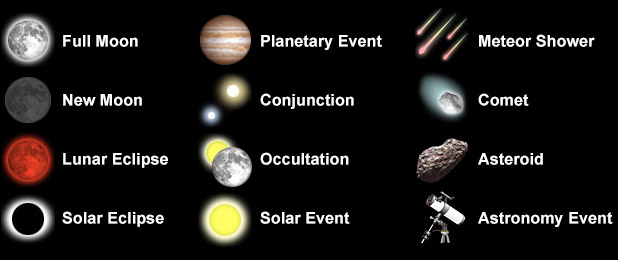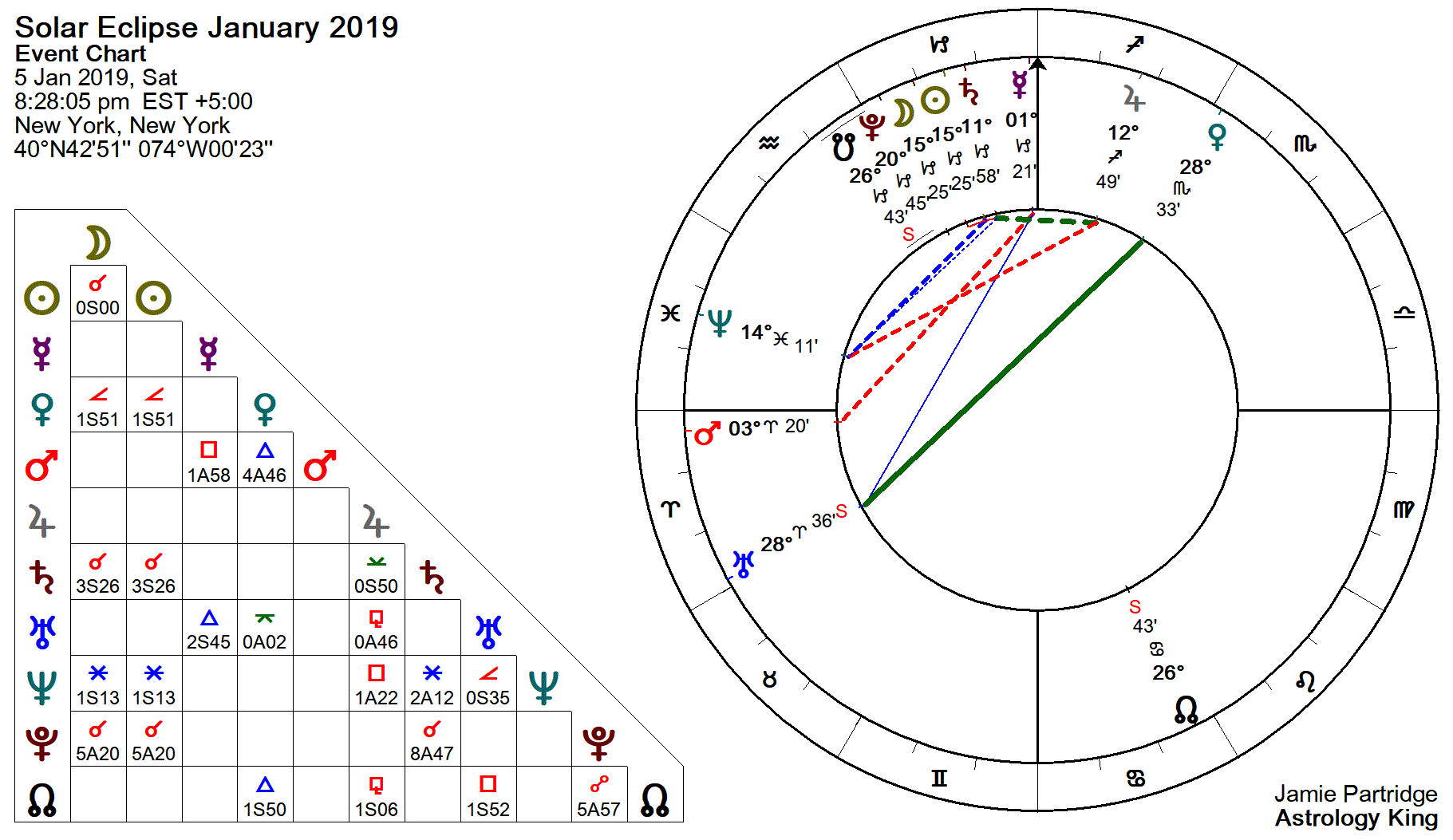- January 2019 lunar eclipse astrology
- January 2019 – Planetary Overview: Major Astrological Aspects and Transits
- Solar Eclipse 2019
- January lunar eclipse astrology
- Solar Eclipse 2019 - At a Glance
- Partial Solar Eclipse of January 06.
- super accurate horoscopes.
- January – Planetary Overview: Major Astrological Aspects and Transits | Tarot - Astrology!
- taurus love horoscopes astrosurf.
- january 9 2019 aquarius astrology.
- AstroSage Kundli App?
- aries 4 february horoscope 2019;
The Lyrids is an average shower, usually producing about 20 meteors per hour at its peak. The shower runs annually from April It peaks this year on the night of the night of the 22nd and morning of the 23rd.
These meteors can sometimes produce bright dust trails that last for several seconds. The waning gibbous moon will block out many of the fainter meteors this year, but if you are patient you should still be able to catch a few of the brightest ones.
Meteors will radiate from the constellation Lyra, but can appear anywhere in the sky. May 4 - New Moon. May 6, 7 - Eta Aquarids Meteor Shower. The Eta Aquarids is an above average shower, capable of producing up to 60 meteors per hour at its peak.
Most of the activity is seen in the Southern Hemisphere. In the Northern Hemisphere, the rate can reach about 30 meteors per hour.
January 2019 lunar eclipse astrology
It is produced by dust particles left behind by comet Halley, which has known and observed since ancient times. The shower runs annually from April 19 to May It peaks this year on the night of May 6 and the morning of the May 7.
The thin crescent moon will set early in the evening leaving dark skies for what should be a good show. Meteors will radiate from the constellation Aquarius, but can appear anywhere in the sky.
January 2019 – Planetary Overview: Major Astrological Aspects and Transits
May 18 - Full Moon, Blue Moon. This full moon was known by early Native American tribes as the Full Flower Moon because this was the time of year when spring flowers appeared in abundance. Since this is the third of four full moons in this season, it is known as a blue moon.
But since full moons occur every The extra full moon of the season is known as a blue moon. Blue moons occur on average once every 2. June 3 - New Moon. June 10 - Jupiter at Opposition.
The giant planet will be at its closest approach to Earth and its face will be fully illuminated by the Sun. It will be brighter than any other time of the year and will be visible all night long. This is the best time to view and photograph Jupiter and its moons.

A medium-sized telescope should be able to show you some of the details in Jupiter's cloud bands. A good pair of binoculars should allow you to see Jupiter's four largest moons, appearing as bright dots on either side of the planet.
Solar Eclipse 2019
June 17 - Full Moon. This full moon was known by early Native American tribes as the Full Strawberry Moon because it signaled the time of year to gather ripening fruit. It also coincides with the peak of the strawberry harvesting season. June 21 - June Solstice. The June solstice occurs at The North Pole of the earth will be tilted toward the Sun, which will have reached its northernmost position in the sky and will be directly over the Tropic of Cancer at This is the first day of summer summer solstice in the Northern Hemisphere and the first day of winter winter solstice in the Southern Hemisphere.
June 23 - Mercury at Greatest Eastern Elongation. July 2 - New Moon. July 2 - Total Solar Eclipse. A total solar eclipse occurs when the moon completely blocks the Sun, revealing the Sun's beautiful outer atmosphere known as the corona.
The path of totality will only be visible in parts of the southern pacific Ocean, central Chile, and central Argentina. A partial eclipse will be visible in most parts of the southern Pacific Ocean and western South America.
July 9 - Saturn at Opposition.
January lunar eclipse astrology
The ringed planet will be at its closest approach to Earth and its face will be fully illuminated by the Sun. This is the best time to view and photograph Saturn and its moons.
A medium-sized or larger telescope will allow you to see Saturn's rings and a few of its brightest moons. July 16 - Full Moon.
This full moon was known by early Native American tribes as the Full Buck Moon because the male buck deer would begin to grow their new antlers at this time of year. July 16 - Partial Lunar Eclipse. A partial lunar eclipse occurs when the Moon passes through the Earth's partial shadow, or penumbra, and only a portion of it passes through the darkest shadow, or umbra.
During this type of eclipse a part of the Moon will darken as it moves through the Earth's shadow. July 28, 29 - Delta Aquarids Meteor Shower.
The Delta Aquarids is an average shower that can produce up to 20 meteors per hour at its peak. It is produced by debris left behind by comets Marsden and Kracht.
The shower runs annually from July 12 to August It peaks this year on the night of July 28 and morning of July The waning crescent moon will not be too much of a problem this year. The skies should be dark enough for what could be a good show. August 1 - New Moon.
August 9 - Mercury at Greatest Western Elongation. August 12, 13 - Perseids Meteor Shower. The Perseids is one of the best meteor showers to observe, producing up to 60 meteors per hour at its peak.
It is produced by comet Swift-Tuttle, which was discovered in The Perseids are famous for producing a large number of bright meteors. The shower runs annually from July 17 to August It peaks this year on the night of August 12 and the morning of August The nearly full moon will block out most of the fainter meteors this year, but the Perseids are so bright and numerous that it could still be a good show.
Meteors will radiate from the constellation Perseus, but can appear anywhere in the sky. August 15 - Full Moon. This full moon was known by early Native American tribes as the Full Sturgeon Moon because the large sturgeon fish of the Great Lakes and other major lakes were more easily caught at this time of year.
August 30 - New Moon. September 9 - Neptune at Opposition. The blue giant planet will be at its closest approach to Earth and its face will be fully illuminated by the Sun. This is the best time to view and photograph Neptune. Due to its extreme distance from Earth, it will only appear as a tiny blue dot in all but the most powerful telescopes.
September 14 - Full Moon. This full moon was known by early Native American tribes as the Full Corn Moon because the corn is harvested around this time of year.
This moon is also known as the Harvest Moon. The Harvest Moon is the full moon that occurs closest to the September equinox each year. September 23 - September Equinox. The September equinox occurs at Mercury in Capricorn square Mars in Aries. Sun conjunct Pluto in Capricorn. Mercury conjunct Saturn in Capricorn. Jupiter in Sagittarius square Neptune in Pisces.
Mercury in Capricorn sextile Neptune in Pisces. Venus in Sagittarius trine Mars in Aries.
- february 8 horoscope sign leo or leo.
- Astronomy Calendar of Celestial Events - Sea and Sky.
- all about aquarius astrology online;
- Eclipses During 2019.
- ?
Mercury conjunct Pluto in Capricorn. Sun in Capricorn square Uranus in Aries. This is also a total lunar eclipse, the first one in , visible in Europe, Asia, Africa, North and South America, Pacific, Atlantic, Indian and Arctic Ocean — s time for self-expression, with creativity and originality.
Venus in Sagittarius square Neptune in Pisces.
Solar Eclipse 2019 - At a Glance
Mars in Aries square Saturn in Capricorn. Venus conjunct Jupiter in Sagittarius. Mars in Aries trine Jupiter in Sagittarius.
Sun conjunct Mercury in Aquarius. Share the post "January — Planetary Overview: Major Astrological Aspects and Transits".
This privacy policy sets out details about what data we collect and how we use it. It will take place on the day of Amavasya in the month of Ashadha. It will occur in Gemini sign during Ardra Nakshatra. So, the natives born in this sign and Nakshatra may face the unfavourable outcomes of this Solar Eclipse.
This eclipse will be partially visible in India, and the timing mentioned above is valid for New Delhi only. Also, third Surya Grahan will take place on the day of Amavasya in the month of Paush.
It will occur in Sagittarius sign during Moola Nakshatra. The natives associated with this sign and Nakshatra may face the disadvantageous results of this Solar Eclipse. As a result, the sunlight gets blocked and does not reach the Earth, especially in regions where Grahan is most visible.
This is also the time when negative energies are more active and may cause adverse effects on our life. Therefore, it is necessary for people to know the timings of Grahan, its rules and certain astrological precautions to avoid the bad results of Solar Eclipse.
If we talk about the general occurrences of eclipse, whether Solar or Lunar Moon Eclipse, there are at least two Solar Eclipses and two Lunar Eclipses that occur every year. In , there will be 3 Solar Eclipses, among which first will be on January 6, second will be on June 2 to 3, and third Surya Grahan will be on December These 3 eclipses will be either visible or not visible in India.
However, they will be visible in some parts of Asia, America and Pacific regions. Please note that, if they are not visible in India, then there religious and astrological significance will not be considered here.
However, as per astrological calculations, one of the Solar Eclipse will be partially visible in India, therefore, its astrological significance will be considered here. In Hinduism, Sutak Kaal is that period when certain tasks are strictly prohibited.
The reason being that it is considered inauspicious to perform them in this duration, otherwise they may give bad results. Generally, it begins before an eclipse and ends after taking a bath, when the eclipse ends. It is important to note that the rules of Sutak Kaal are not applicable on children, sick and elderly people.
As first and second Surya Grahan in will not be visible in India, therefore, their sutak rules will not be applicable here. But, the third Grahan will be partially visible in India. So, its religious and astrological importance will be considered here. Pregnant women should take special precautions during Solar Eclipse Because it is believed that an eclipse affects a pregnant woman.
